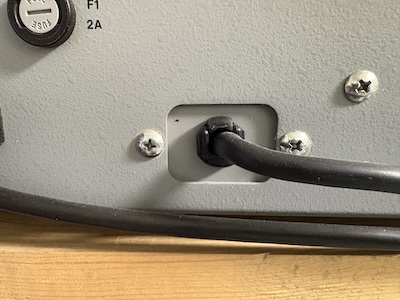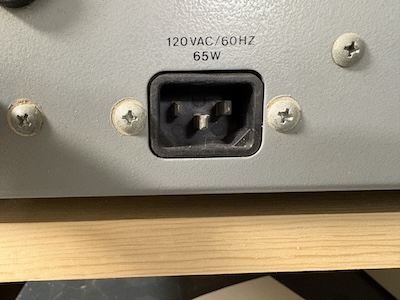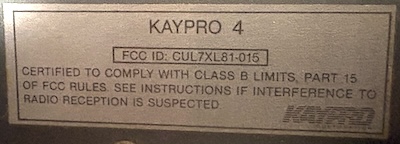FCC regulations: Difference between revisions
FrankRahman (talk | contribs) |
FrankRahman (talk | contribs) |
||
| Line 35: | Line 35: | ||
|} | |} | ||
If you still have interference with other devices after replacing the Filter Caps on the power the filter plug is the next item to replace. | |||
==FCC Compliance== | |||
In America the FCC requires compliance of equipment used in Commercial and Residential areas. FCC compliance certification is the responsibility of the manufacturer. The FCC makes the manufacture perform the tests and submits the results to the FCC. | In America the FCC requires compliance of equipment used in Commercial and Residential areas. FCC compliance certification is the responsibility of the manufacturer. The FCC makes the manufacture perform the tests and submits the results to the FCC. | ||
Revision as of 18:10, 11 June 2025
The metal cabinet on the Kaypro II reduces the radiated electrical energy to a low level. The radiated interference on the weak, low-frequency television stations (channels 2 and 5) in my area was negligible.
The unit I tested did, however, have some conductive radiation through the power lines. My wireless intercom became noisy when the unit was turned on and really set up a racket when i used the disk drives. A filter in the line cord cured most of the problem. I checked with Nonlinear Systems, which confirmed that my evaluation unit did not have an internal line-filter installed. The company was aware that such a filter was needed and planned to install one on future production machines.
(Infoworld, October 18, 1982)
A note about Filter Caps
At this point it is worth talking about RFI or Radio Frequency Interference. The switch mode power supplies used in the Kaypro machines and in most modern computers produces a large amount of interference if it is not suppressed with filtering mechanisms.
All of the power supplies used by Kaypro have basic filtering capacitors (caps) installed from the supplier. Some of these are disk caps and some are film caps. The disk caps are not as good or safe as the film caps. The film caps from this era are usually made by the "RIFA" company. These caps when they are placed across the positive and negative lines can carry 120 or 240 volts through them. They were designed to last about 20 years. The thought was that in 20 years no one would want to use the computer anymore. When they age the outer shell tends to crack allowing the electrolyte inside to go from a liquid to a gas and escape from the capacitor.
This causes the famous "blue smoke" of the machine to be released when the RIFA cap blows itself apart. While removal of the broken cap will allow the machine to run again it can be problematic and reduce the signals/bandwidth of TV, Radio wireless devices, and Wifi.
They can be replaced with brand new RIFA caps or hard outer plastic filter caps of the type removed (X2 or Y2) except as noted on my Power Supplies webpage. Both should be replaced in another 20 years.
Case mounted RFI filters
The metal case of the Kaypro works great at keeping the RFI signals from coming out but there is one key weak point. The power cord coming out acts like an antenna. To combat this an RFI plug is used. It has additional filter caps built in which minimizes both incoming and outgoing RFI. The first two versions of the Kaypro II did not have a filter plug.
| The cord comes directly through the case. No plug filter. | |
| The cord comes through a plate in an opening designed for a filter plug but there is no filter plug. | |
| Finally we have a filter plug. |
If you still have interference with other devices after replacing the Filter Caps on the power the filter plug is the next item to replace.
FCC Compliance
In America the FCC requires compliance of equipment used in Commercial and Residential areas. FCC compliance certification is the responsibility of the manufacturer. The FCC makes the manufacture perform the tests and submits the results to the FCC.
The initial Kaypro II did not have FCC compliance. In the September NewsGram to dealers Kaypro states, "Pursuant to FCC rules each computer must carry the enclosed sticker. Please attach them to any computer shipped to you before September."
I believe the sticker that they are referring to is this one.
I would suspect that in September they began putting them on in the factory.
Later they would get FCC compliance and the II, 2, 2X, and 4 would bear these stickers.
I have not seen an FCC sticker on a Kaypro 10.






